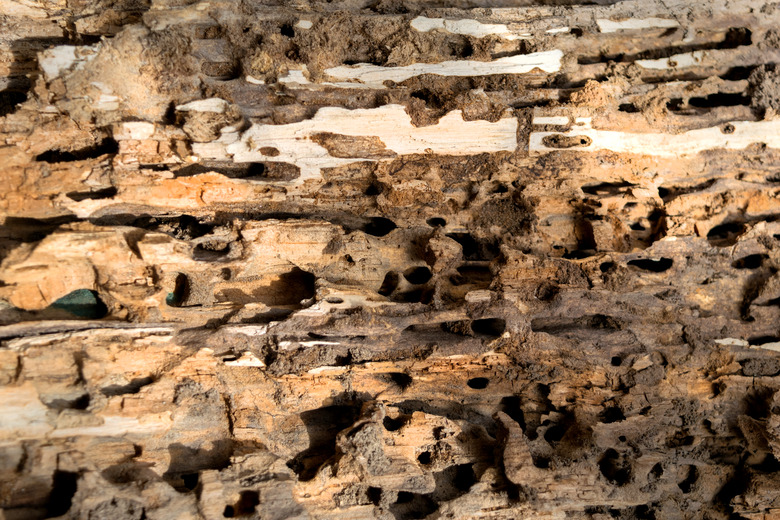How To Kill Termites In Firewood
We may receive a commission on purchases made from links.
Although a few different insects can cause tunnels in firewood, any that are lined with mud likely indicate a termite infestation. You may also find these mud tunnels on the outside of the wood along with discarded wings on the ground. You can, theoretically, still burn infested firewood in your fireplace if you take it right from the firewood pile to the fire with no stops in between. Experts don't recommend this, however, and suggest fixing the problem if you can or disposing of the wood.
What Not to Do
What Not to Do
Nobody wants to deal with bugs. If you find termites in your firewood pile, you may understandably be tempted to douse the pile in insecticide and move on. Don't do this. Insecticides and other chemicals can produce toxic fumes when they burn, and you don't want to expose yourself to them when you toss a log on the fire, especially when burning wood indoors in a fireplace or wood stove.
Assess the Age and Location of the Firewood
Assess the Age and Location of the Firewood
The first thing to do when you suspect termites in your firewood is to take a fresh look at where you've stacked your wood pile. No one wants to trek too far in the winter cold for more wood, but you need to move your firewood now if it's stacked against your house or another structure. Ideally, you should store firewood at least 20 feet away from your home so that termites in the wood pile don't become termites in your house.
You also need to think about how old the firewood is. If you just picked up a new load of wood, odds are that the termites came along with the logs. While a few worker termites may have hitched a ride with the wood, most of the termite colony and its queen are probably living underground wherever the wood used to sit. After a few days separated from the rest of the colony, the termites should die.
Move the Firewood
Move the Firewood
Even if the firewood isn't sitting near your house, most termite species live underground. This means the area where your firewood is sitting is likely the source of the problem. It's a good idea to move the firewood and then treat the ground beneath it for termites. Unless the infestation is severe, moving the wood should separate the workers from their colony and kill them, and treating the ground eliminates the rest of the colony from your property.
To make sure you kill all of your intended targets, consider spreading diatomaceous earth on and around the firewood after you move it. Safe for use around pets, humans, and combustibles, the jagged edges in the diatomaceous earth will kill any termites unlucky enough to walk through it. Note that diatomaceous earth will need to be reapplied after rainy weather.
Dispose of Severely Infested Wood
Dispose of Severely Infested Wood
If you have lots of mud tunnels or are seeing actual termites rather than just signs of their presence, your best move is to dispose of the affected wood. If it's legal to do so in your area, you can burn the wood in an outdoor fire pit or bonfire. If it's not, contact your local waste management company and ask if you can bring the wood to them. They should be able to take the wood for you or will tell you who will.
Prevent Future Problems
Prevent Future Problems
The best way to prevent termite infestations in firewood is to store it off the ground. You can easily do so using a firewood rack. A store-bought rack will do, but it takes only a few bricks or concrete blocks to elevate the wood a few inches. Termites prefer their wood damp, so stack your wood in a sunny area if you can. If desired, you can also sprinkle termite granules around your wood pile to keep the pests at bay.
